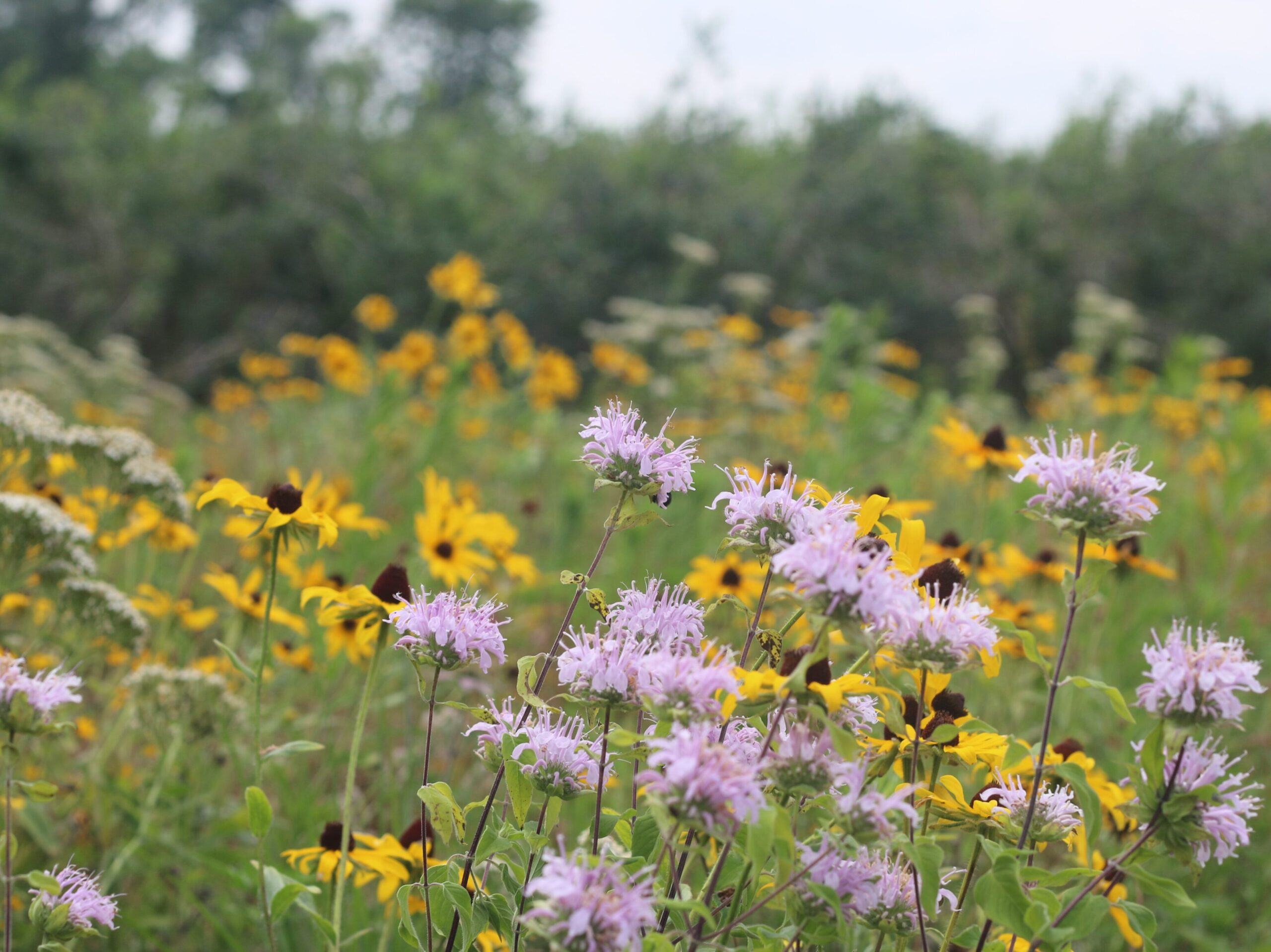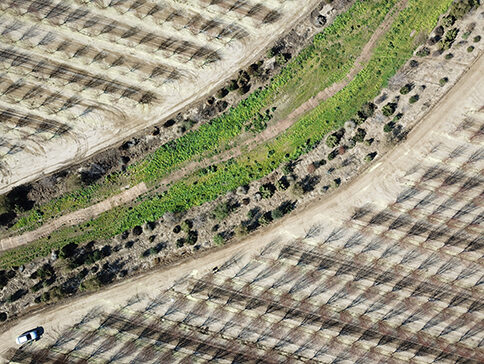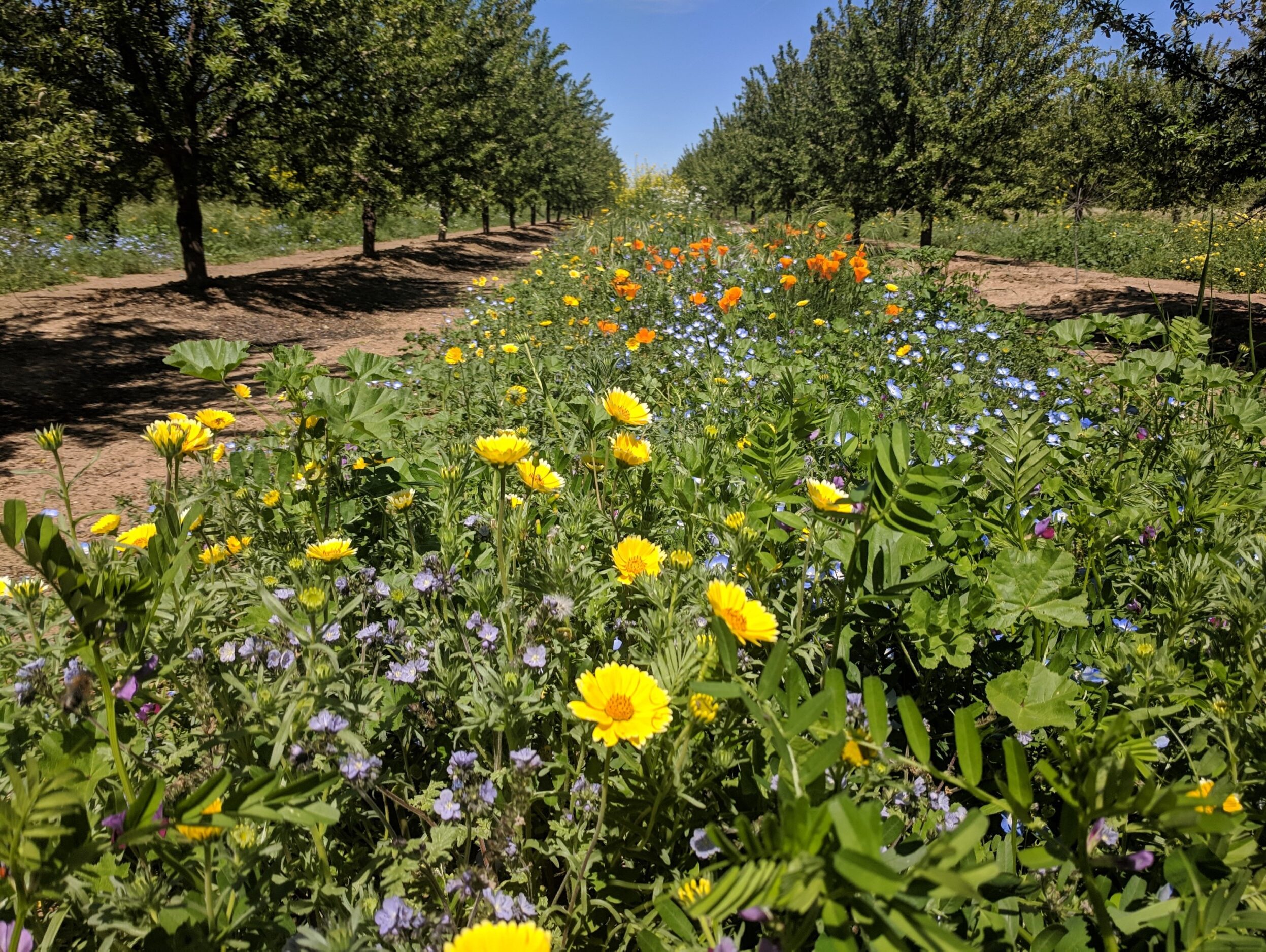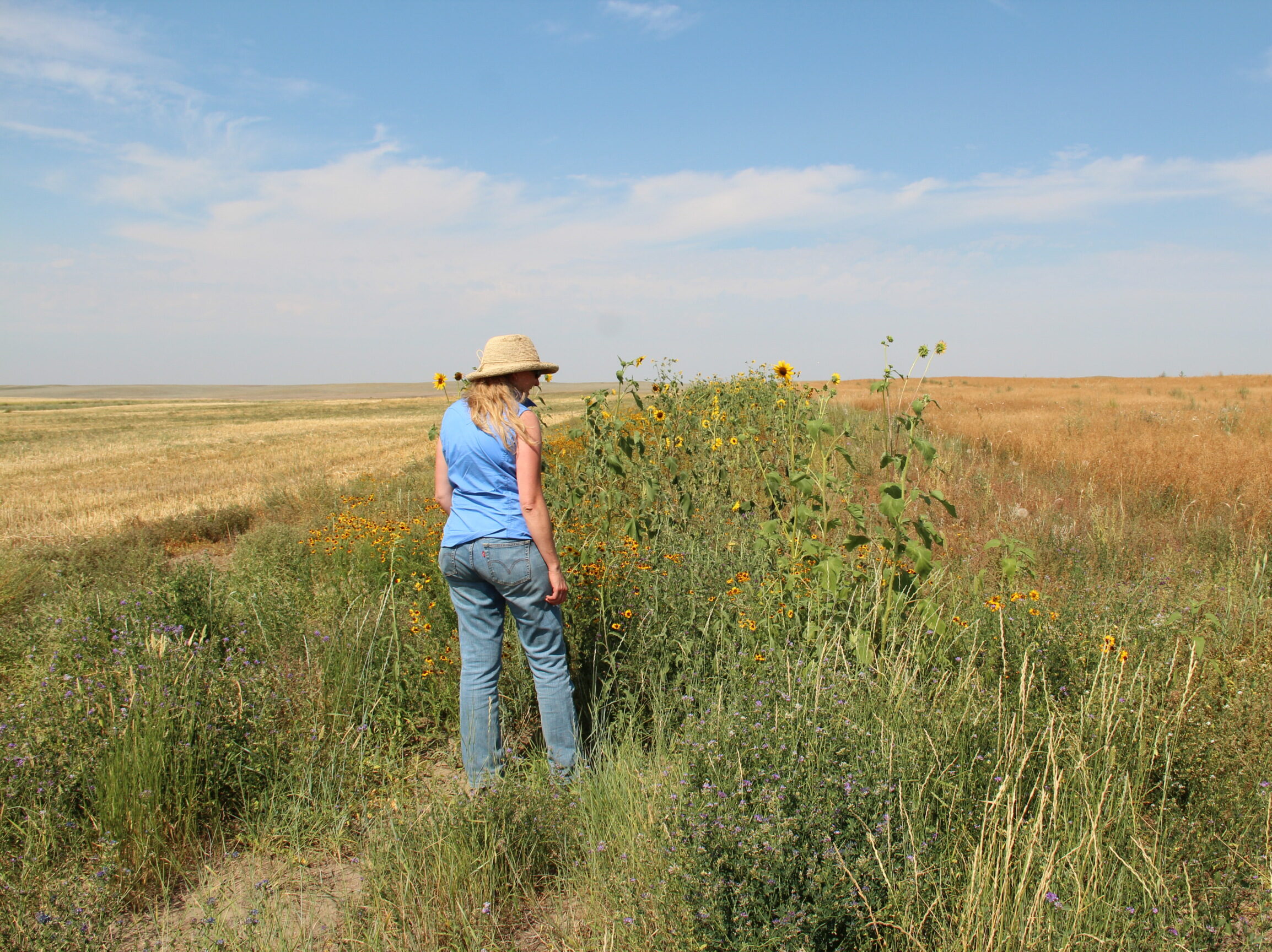Cost Estimator: Habitat Installation & Maintenance
Creating high quality pollinator and beneficial insect habitat is typically the most expensive part of getting Bee Better Certified. Creating habitat and protecting it from harmful insecticides is also the most impactful thing you can do to help save bee populations and support healthy beneficial insect populations. Learn more here or review the Background to the Production Standards located in the Document Center.
This tool produces a general estimate for new permanent habitat (PH) and/or temporary habitat (TH) projects that meet the acreage requirements of the Bee Better Certified Production Standards. Please note that these calculations are estimates adapted from real-world case studies. Your project costs may vary significantly due to many factors including plant materials selection and labor.
Please note: If you have existing natural areas or older plantings on your farm, those areas may already meet the permanent habitat requirements. Use the Farm Management Assessment Guide in the Document Center to check your habitat areas for compliance or reach out to the Bee Better Certified team for help connecting with plant ecologists in your area.
For questions on your estimate and suggestions for how to reduce habitat costs, please reach out to [email protected].
Habitat type definitions and examples
How much does it cost to plant pollinator habitat? In part, that depends on the type of habitat you are planting and the type of plant materials you use.




Permanent habitat (PH) can be established by native seeds (left/top) or potted plants (second from left/top). 75% of the species in a new permanent habitat planting must be native species. In remnant or older plantings, 35% of the species must be native. PH is present year-round, although the plants may be in a vegetative or dormant state during the winter or dormant season. Examples of PH: Hedgerows, perennial or re-seeding wildflower strips, riparian forests, filter strip
Temporary habitat (TH) is typically established by seeds and can be integrated with crops such as orchard understories (second from right/bottom) or insectary strips (right/bottom). TH typically dies back annually. It may remain in one location or move around the certified parcels (as is the case with rotating cover crops). TH must be allowed to bloom. For cover crops, at least 50% bloom must be achieved prior to termination
How habitat acreage requirements are calculated
Total habitat acreage: At a minimum, one-fifth (1/5) of the required habitat (i.e., 1% of the certified acreage) must be permanent habitat; the remainder may be in temporary habitat. If 5% or more of the certified acreage is in permanent habitat the operation is not required to have temporary habitat.
Total habitat = permanent habitat (PH) + temporary habitat (TH)
Permanent habitat acreage: At a minimum, one-fifth (⅕) of the required habitat (i.e., 1% of the certified production acreage) must be PH; the remainder may be in TH. If PH equals 5% or more, no TH is required.
Permanent habitat = Certification acreage * (Percentage of certification acreage planned to be in permanent habitat / 100 )
Temporary habitat acreage: Temporary habitat must not exceed four-fifths (4/5) of the required habitat (i.e. 4% of the certified production acreage) and it must include one or more flowering, pollinator-attractive plant species. If mass-flowering, pollinator attractive crops are identified as part of the temporary habitat, they may not account for more than one-fifth (1/5) of the required habitat (i.e., no more than 1% of the certified acreage).
Temporary habitat without mass-flowering crop = Certification acreage * 0.05 - (Percentage of certification acreage planned to be in permanent habitat / 100 ) Temporary habitat with mass flowering crop = Certification acreage * (0.05 - (Percentage of certification acreage planned to be in permanent habitat / 100 ) - 0.01)
For instructions on how to measure habitat areas, please see Appendix B: Habitat Measurement Guidelines in the Production Standards.
Looking for financial or technical assistance? There are many options for funding and getting help with habitat work on your farm from the Xerces Society, USDA Service Centers, NRCS Incentives Programs, CDFA Healthy Soils, and much more. To learn more please contact [email protected].
Understanding your estimate
All estimates include labor costs based on average wages of agricultural workers for each state. The cost of tools, equipment, and fuel used during these activities are not included in the estimates.
| Site Preparation | Site preparation costs cover the 1) weed suppression materials, 2) irrigation supplies and 3) local farm worker wages. Learn more about site preparation methods and relative costs in this guide for Organic Site Preparation. |
| Installation Costs | Installation costs cover 1) plant materials, 2) labor for plant material installation (manual labor for planting potted plants or labor for seeding by broadcast or drill). |
| Maintenance Costs Permanent Habitat | Maintenance costs cover the first 3 year period of BBC certification. With proper maintenance, most permanent habitat areas will be self-sustaining after this period. Maintenance activities include hand-weeding, mowing, selective herbicide applications, etc. |
| Maintenance Costs Temporary Habitat | Maintenance costs for temporary habitat are not estimated, since temporary habitat is typically moved around the farm based on annual or seasonal crop rotations and/or requires installation every year. |
- Values in this estimate are adjusted from Estimated Costs to Establish Pollinator Hedgerows, Wildflower Plantings Using Chemical Fallow, and Wildflower Plantings Using Solarization. This calculator starts with values based on those case studies in California and then adjusts for regional differences in cost of living, labor, climate and ecoregion.
- Please find your region’s Habitat Installation Guides in the Xerces Society’s Pollinator Conservation Resource Center for recommendations on installing habitat.
- Costs for plant materials and weed suppression materials can vary greatly due to many factors. Please contact your local nurseries for more precise estimates of seed and potted plants.

